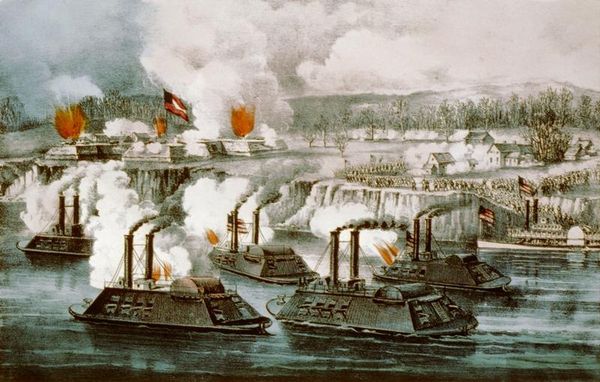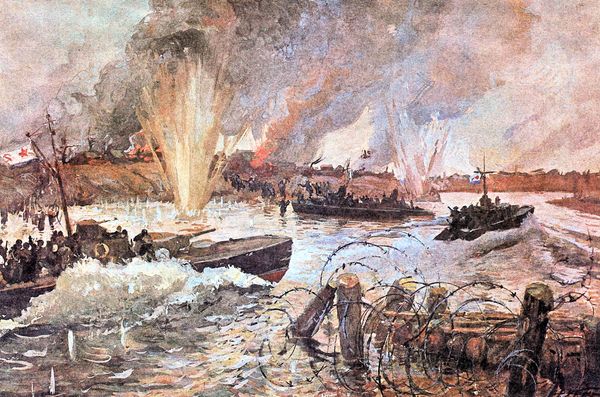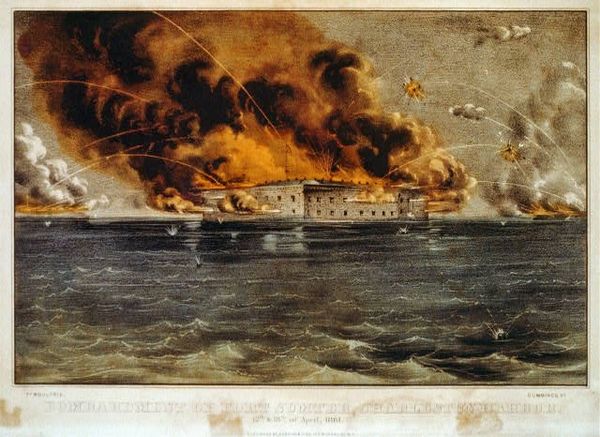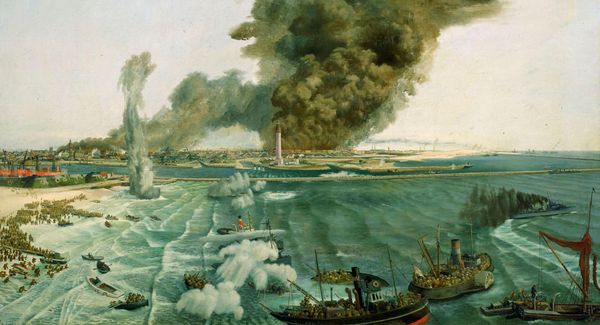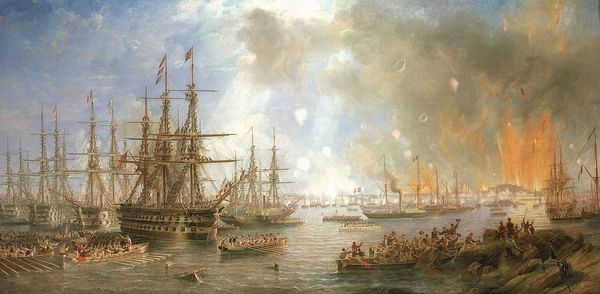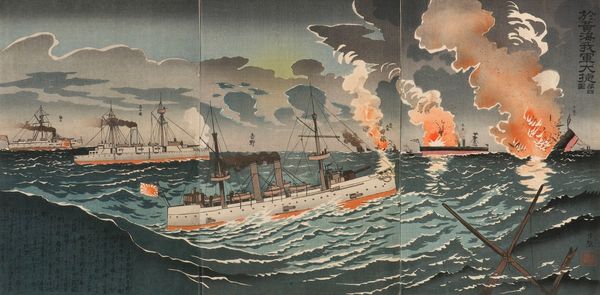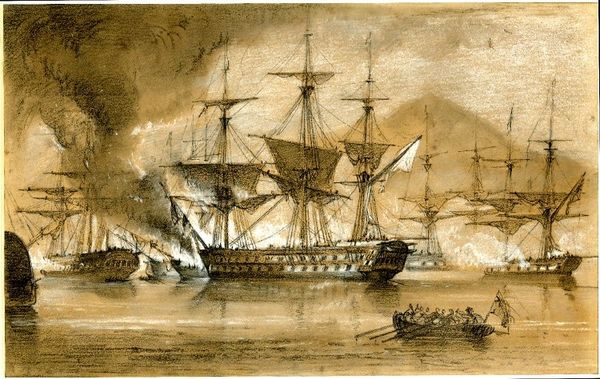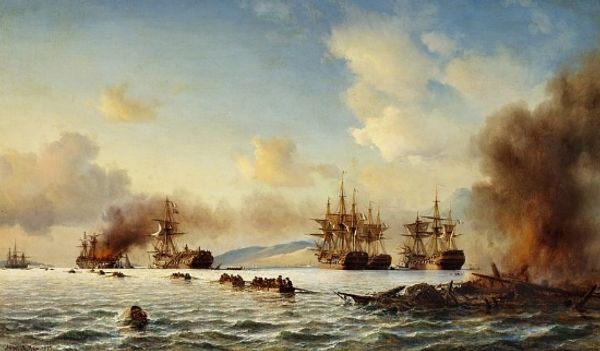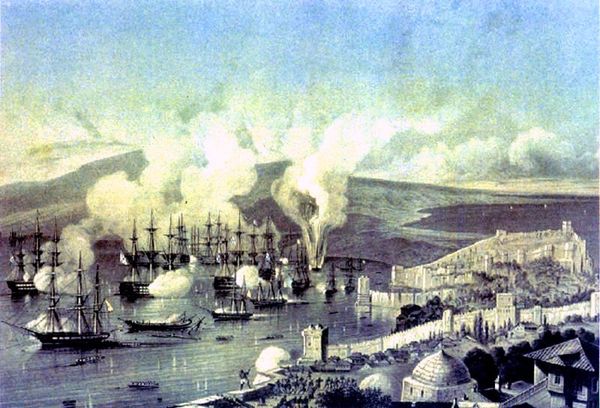
Copyright: Public domain
Editor: We’re looking at "Vicksburg, 1863," a lithograph by Currier and Ives. It vividly captures a scene of naval warfare with imposing ships amid the chaos of battle. I'm immediately struck by how the artist uses the intense lines to portray conflict. How do you interpret this work from a formalist perspective? Curator: Indeed. Formally, this print presents a fascinating study in contrasts. Consider how the ordered lines of the ships juxtapose the chaotic bursts of smoke and fire. The composition cleverly guides the viewer's eye from the detailed foreground vessels toward the distant, yet equally volatile, cityscape. Do you notice the recurrence of verticality, established by the smokestacks, and its interruption by the horizontal waves? Editor: Yes, the verticals add a certain tension, almost like a visual echo of the explosions, against the more tranquil horizontality of the water. Curator: Precisely. And how does the limited color palette – primarily muted grays, browns, and yellows – contribute to the overall feeling? It establishes mood. How the very specific rendering of light and shadow works to depict depth in what would otherwise seem to be a rather shallow space? These elements converge to produce a heightened emotional response despite the medium’s inherent limitations. The semiotic charge of the lithograph then works by implication. Editor: So, through its compositional structure and restrained palette, the print evokes a sense of drama without explicitly detailing the human cost? Curator: Exactly. The formal arrangement directs our emotional and intellectual engagement with the depicted event. It emphasizes the event's spectacle, but avoids direct depiction of consequences, or even triumphs. What initially presents as narrative is converted, on closer viewing, to abstract composition. Editor: I never considered that perspective. Now, I appreciate how formal elements really shape our understanding, even with historical subjects. Thanks! Curator: You're most welcome. It’s rewarding to see how close observation of formal attributes offers an alternative method for making meaning.
Comments
No comments
Be the first to comment and join the conversation on the ultimate creative platform.
